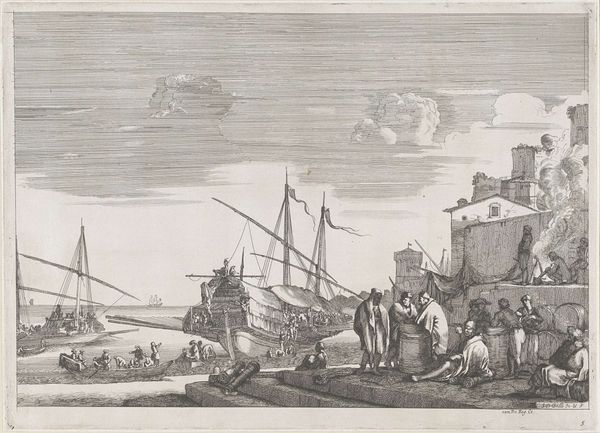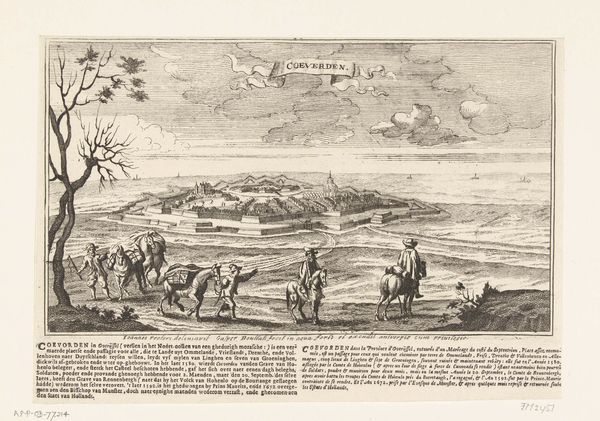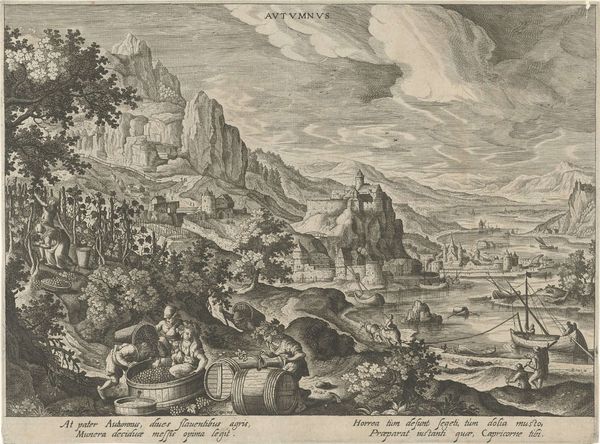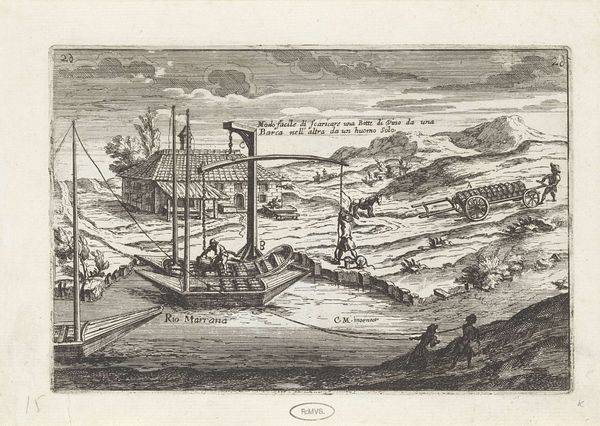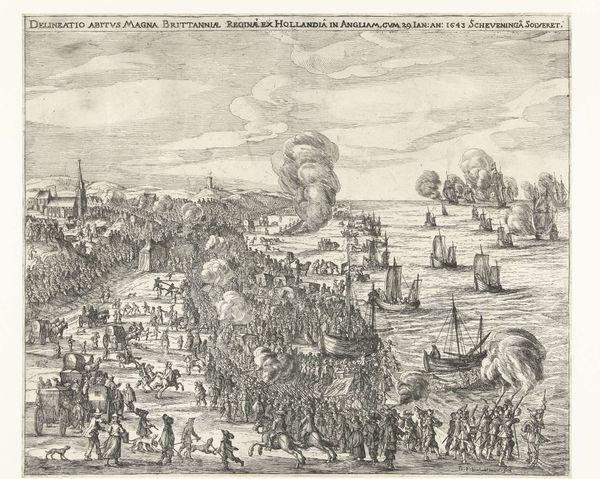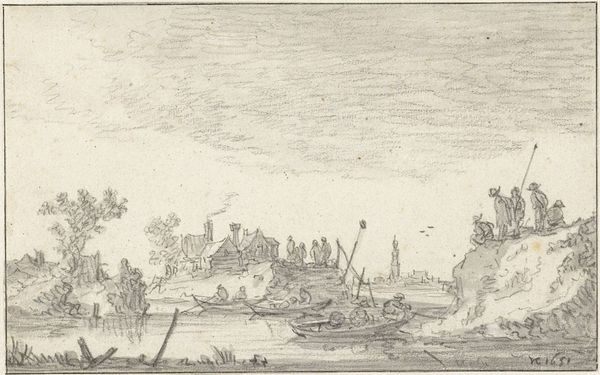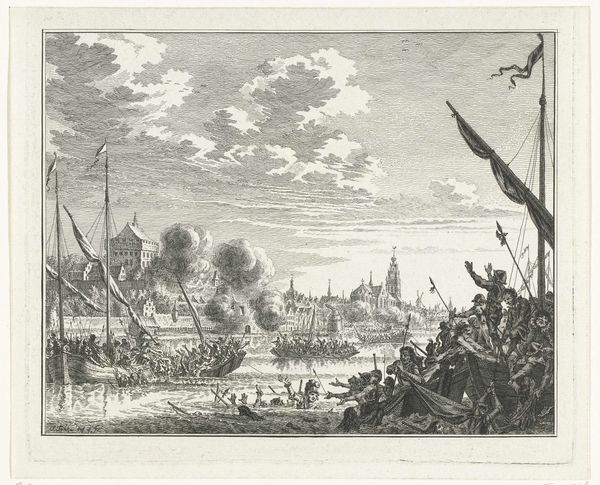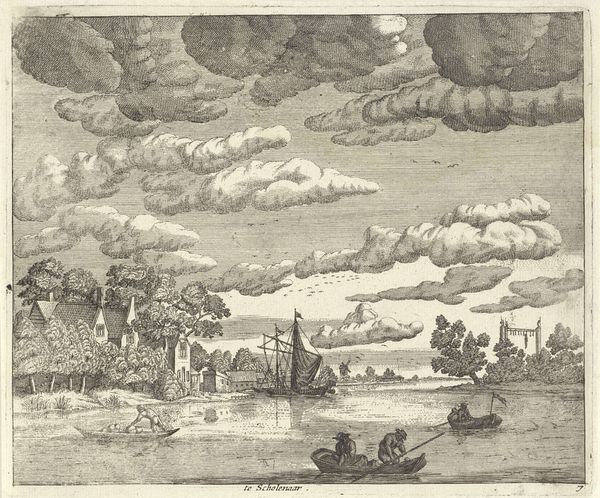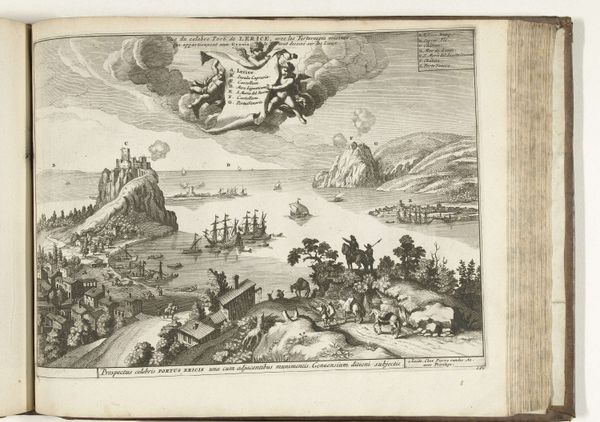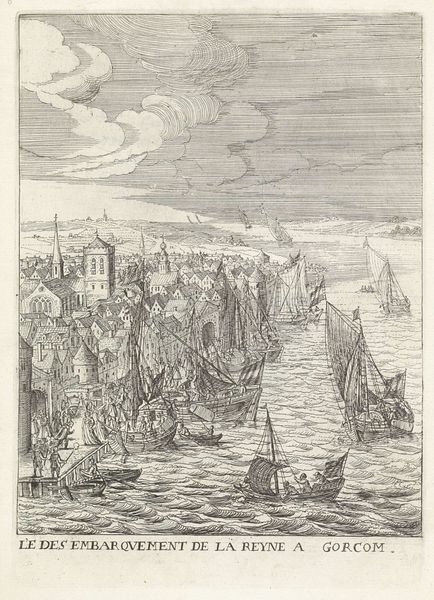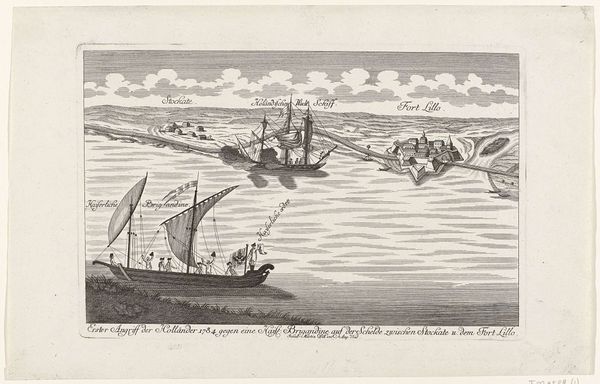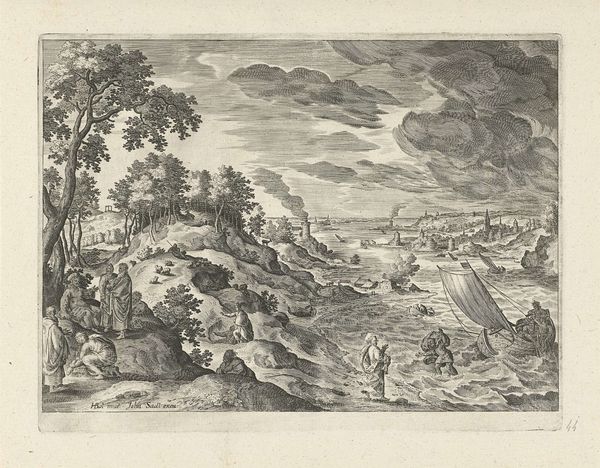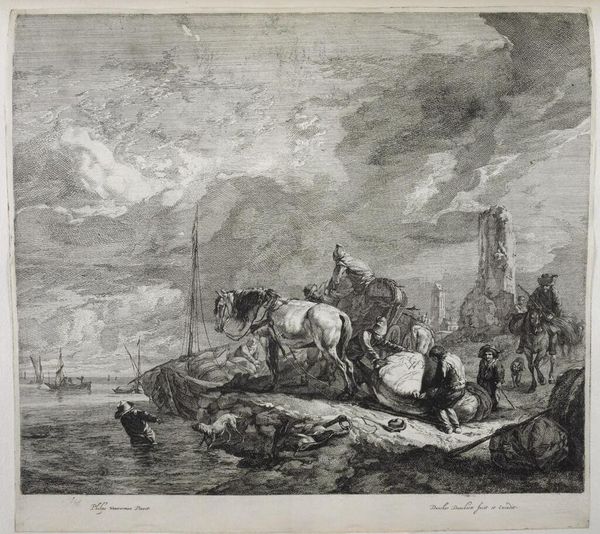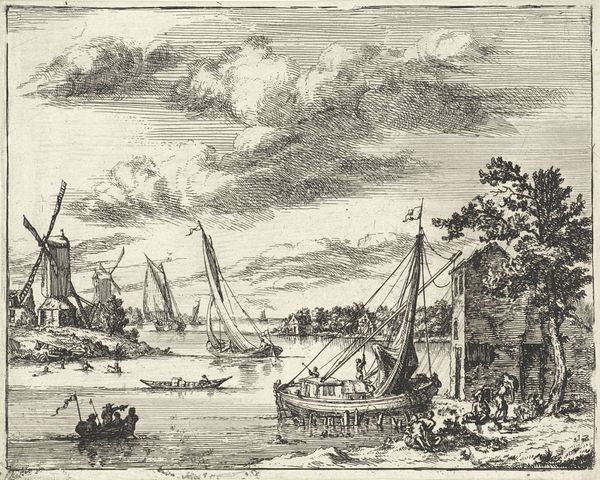
print, engraving
#
baroque
# print
#
landscape
#
genre-painting
#
engraving
Dimensions: height 284 mm, width 431 mm
Copyright: Rijks Museum: Open Domain
Editor: So, this is Jacob Matham’s “November,” created in 1614. It’s an engraving, held at the Rijksmuseum. I'm struck by the dramatic contrast: a turbulent sea with a capsized ship on one side, versus a peaceful pastoral scene on the other. What underlying themes do you think Matham explores by using such jarring imagery? Curator: That jarring contrast you point out is central. Consider the socio-political context of 17th-century Europe. This image reflects not just the change of seasons, but also the precarity of life deeply intertwined with forces beyond human control. Think about trade routes, Dutch naval power, even climate anxieties—all invested in that “turbulent sea”. Is the shipwreck just a weather event or something more? Editor: Well, that's the thing! It feels symbolic, but of what? A loss of innocence? A warning? Curator: Precisely! And note the active verbs in the latin phrases at the bottom, suggesting Pleiades 'turbans' (troubling), which means these aren't just background elements but active instigators of the scene. Now, what about the land, then? The contrast extends beyond mere aesthetics, right? Editor: Right, you're asking us to consider what is solid and safe about the terrestrial world versus the changing tides of fortune on the sea. The artist seems to place privilege on the land in contrast to the perilous life by sea. Curator: It suggests a complicated relationship between nature and civilization, where certain groups have control and access over some parts and are violently disallowed from others. How can we interpret this visual rhetoric of natural spaces? What statements about societal stability are suggested through Matham's depiction of that ‘safe’ shepherd community, particularly in relationship to race, labor and accessibility? Editor: That's a lot to consider! The painting made me see the dangers, but not the power dynamics behind that, and those human stories make art history so relevant today! Curator: Absolutely. By grappling with these intersectional questions, we unpack the artist’s worldview, reflecting on how visual arts contribute to shaping and reinforcing such ideology.
Comments
No comments
Be the first to comment and join the conversation on the ultimate creative platform.
